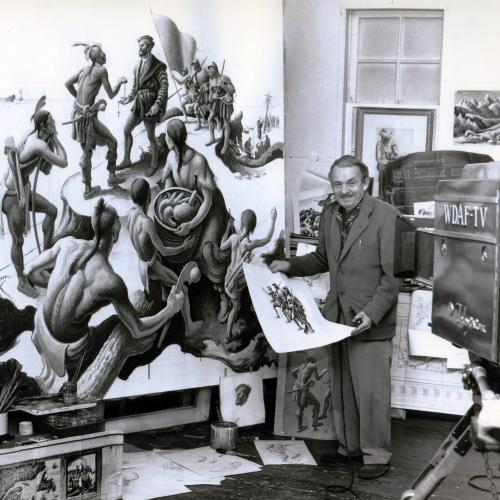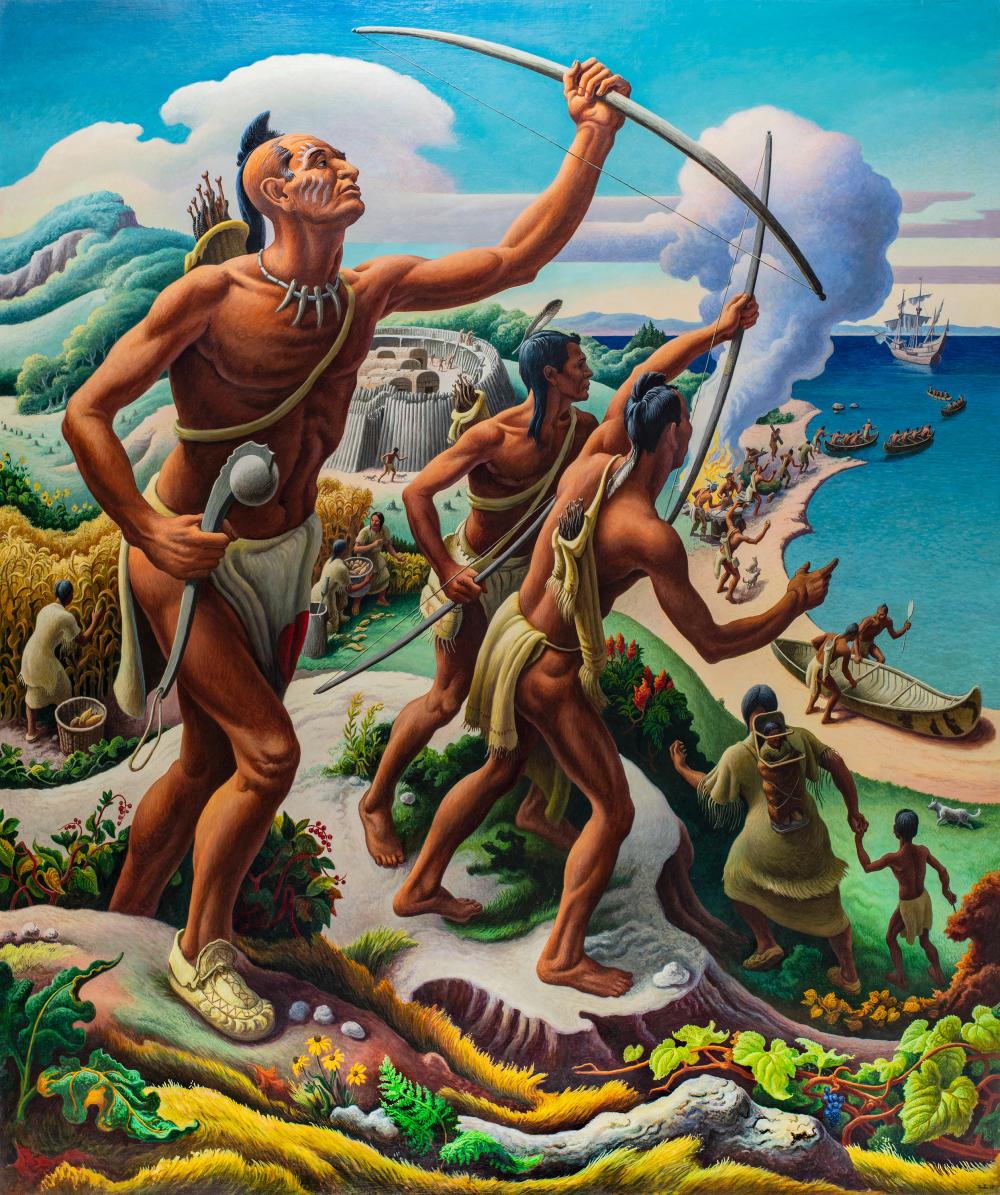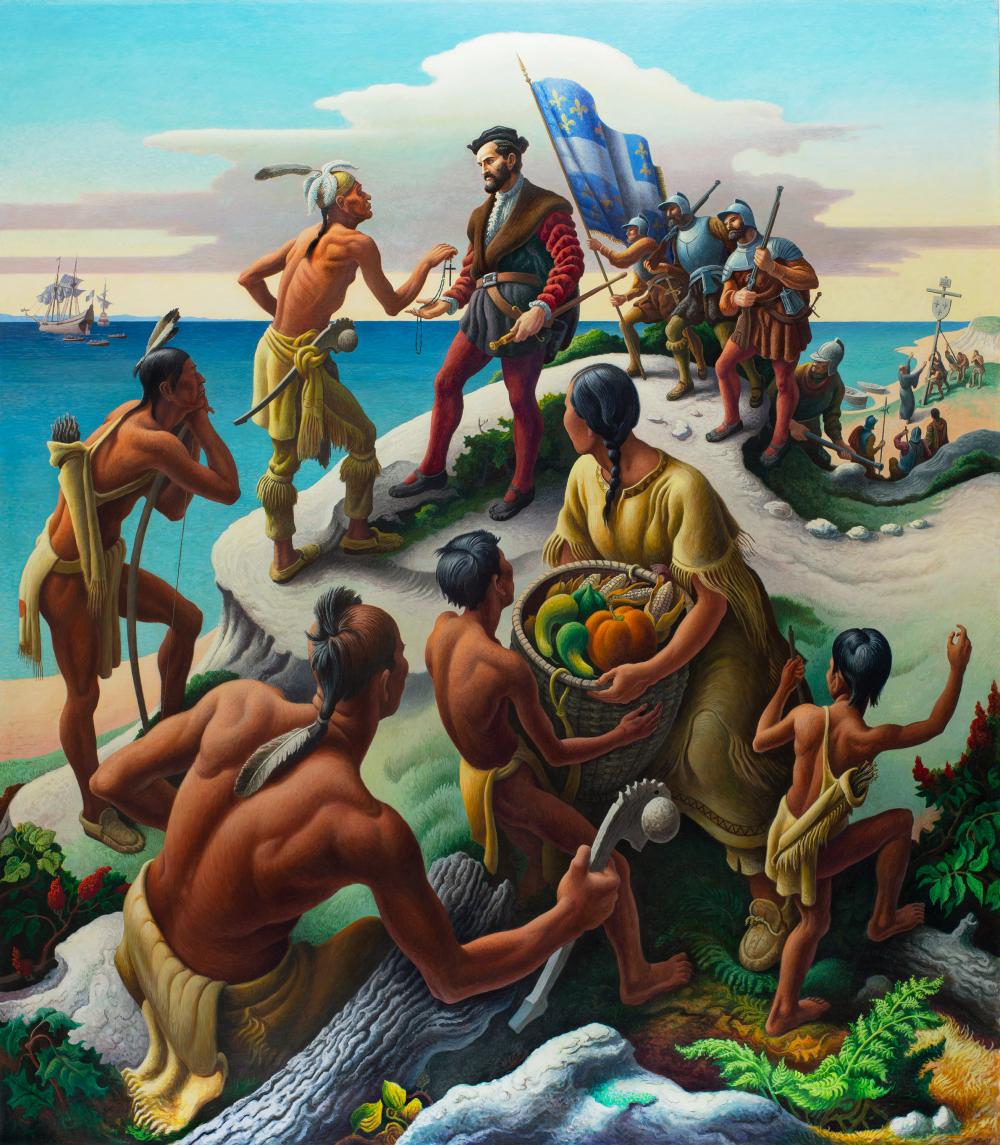Often considered among the most popular 20th-century American artists, Thomas Hart Benton was one of the leading Regionalists, a loosely associated group of realist painters who became best known for depicting rural American subjects, beginning during the Depression. In the 1920s and 1930s Benton consciously rejected abstraction in favor of a naturalistic approach expressed in undulating, rhythmic forms, and he developed a narrative style that focused on American social history. Although often associated with his native Midwest, Benton spent some two decades working and teaching in New York City.
In 1956 Benton was commissioned by Robert Moses, chairman of the New York Power Authority, to create two murals for the powerhouse building of the state’s first hydropower facility in Massena. They feature Jacques Cartier’s explorations of the St. Lawrence River and the Gulf of St. Lawrence. Alternately titled The Seneca Discover the French and Jacques Cartier Discovers the Indians, the murals depict the 16th-century encounters from two points of view. Benton took liberties with the timing of two actual events in his representation, however, combining them into a single scene for, he noted, “the sake of historical meaning.” In spite of this inaccuracy, Benton had thoroughly researched the subject, studying Cartier’s accounts and working with prints made shortly thereafter, as well as a model of the ship. In addition, Benton noted, the “Indian costumes, war clubs, headdresses etc. are for the most part based upon exhibits of Iriquois [sic] life in the State Museum at Albany, N.Y.” These life groups were on view at the Museum when it was housed at the State Education Building. The original building in Massena where these murals were displayed is now closed to the public. They were removed and conserved beginning in 2018 and are on loan to the New York State Museum.
Karen Quinn
Senior Historian/Curator, Art and Culture, New York State Museum






